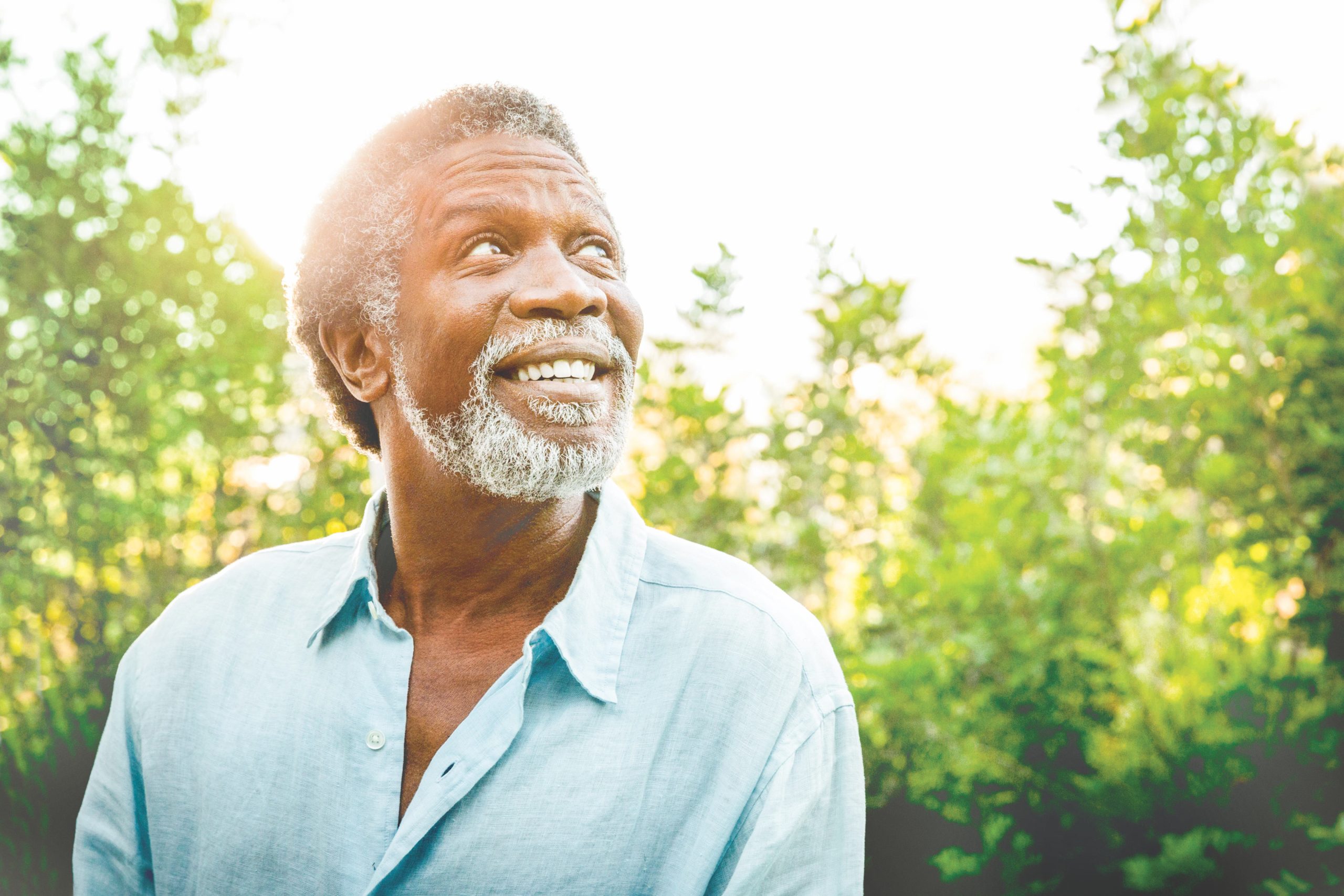A: Dear Bodhisattva Seeking,
What an important question. I’m sure many others share the same concern. We no doubt face unprecedented times, and as we reflect on the past year and approach a new one, we may wonder how to be hopeful in spite of it all.
Recently, the SGI announced its 2021 theme as the Year of Hope and Victory. In tandem, a calligraphy that Ikeda Sensei had inscribed 35 years ago was unveiled. It reads, “Vast Heart.”[1]
With your question in mind, we took a look at what having a “vast heart” actually means from the Buddhist viewpoint, because cultivating our hearts is key to calling forth unending hope at all times and under any circumstances. Here are five points to consider.
1. The purpose of our Buddhist practice is to develop a strong heart.
In his study lecture on “The Strategy of the Lotus Sutra,” Ikeda Sensei writes: “The purpose of faith is to make our hearts strong and steadfast, to develop inner strength and conviction. Everything depends on our minds and our hearts. The ultimate conclusion of Nichiren Buddhism is summed up in the words ‘It is the heart that is important.’[2]
“Buddhism is primarily concerned with victory and defeat. It is a struggle between enlightenment and ignorance. Kosen-rufu is a battle between the Buddha and devilish functions. The heart is what decides our victory or defeat in all things. Spiritual victors can lead lives undefeated by anything. The secret to adorning our lives with brilliant victory is the ‘strategy of the Lotus Sutra.’”[3]
2. Nothing guarantees our victory more than the heart of faith.
In his December 2010 monthly message, Sensei shares: “When [Nichiren] Daishonin speaks of the importance of the heart, he is referring, at the most fundamental level, to this heart of faith.
“The Daishonin writes, ‘Each of you should summon up the courage of a lion king.’[4] Why does he use the allegory of the lion king? Because the ‘lion king fears no other beast.’[5] Here, the Daishonin is teaching us to cultivate the invincible courage to fight on fearlessly, even when surrounded by hostile and antagonistic forces.
“In a letter addressed to a follower worried about a sick family member, the Daishonin writes, ‘If you believe in this [Lotus] sutra, all your desires will be fulfilled in both the present and the future.’[6] He then cites the following sutra passages: ‘Although the devil and the devil’s people will be there, they will all protect the Buddhist Law,’ [7] and ‘[If a person who has an illness is able to hear this sutra, then] his illness will be wiped out and he will know neither aging nor death.’[8] There is no situation that cannot be overcome and no future that cannot be transformed through faith in the Mystic Law.”[9]
3. Difficult times are an opportunity to accumulate “treasures of the heart.”[10]
In the same monthly message, Sensei explains how our hearts enable us to win in the end: “Our trials and tribulations in this world are there for us to unite with our family and loved ones to attain good fortune, and to win and prosper in life.
“Naturally, the ‘treasures of the storehouse’ and ‘treasures of the body’[11] are also important, but the ‘treasures of the heart’ alone enable us to win in the end, to bring our lives to a brilliant close and to make our way through all future existences imbued with the four noble virtues of eternity, happiness, true self and purity. In other words, when we possess strong faith, we are rich beyond compare; we are ‘spiritual billionaires.’ …
“[Second Soka Gakkai President Josei] Toda declared: ‘To rise up from despair, challenge our own problems and work to help others as well—could there be any more admirable life than this? It is each person’s victory in faith that powerfully propels kosen-rufu forward.’
“We embrace faith in the Mystic Law. Strong faith constitutes the life state of Buddhahood.”[12]
4. Possessing a “vast heart” means to never be defeated.
When the calligraphy “vast heart” was unveiled at the 47th Soka Gakkai Headquarters Leaders Meeting on Nov. 1, Sensei said in his message:
“Though imprisoned in a cold, cramped cell by Japan’s militarist authorities, [first Soka Gakkai President Tsunesaburo] Makiguchi still wrote, ‘Depending on one’s state of mind, even hell can be enjoyable.’[13] The spirit that characterized his momentous struggle truly resonates with the Daishonin’s words ‘The greater the hardships befalling him, the greater the delight he feels, because of his strong faith.’[14]
“Our founding president laid down his life, leaving an example of the ‘vast heart’ of Soka for his disciples and successors. This ‘vast heart’ is the great, invincible spirit to keep striving together with the Mystic Law through even the bitterest adversity to transform all poison into medicine and freely create value with confidence, strength, wisdom and optimism.”[15]
5. Our heart is expressed in our actions to advance kosen-rufu with our mentor.
In his study lecture on “The Drum at the Gate of Thunder,” Sensei shares the source of his unchanging commitment to faith: “In a discussion with members of the student division, I once responded as follows to a question about the oneness, or unity, of mentor and disciple: ‘It means to have a mentor in your heart while standing on your own two feet.
“ ‘President Toda resides in my heart. This is not something you speak out loud; it’s a matter of the heart. This is because unity is something that exists inside you.’
“At all times, no matter where I am, I feel as if I am constantly engaging in dialogue with President Toda as I go about my activities. Our unity exists within me. The unity of mentor and disciple transcends distance and time. The hearts of mentor and disciple compose an eternal history of united struggle.
“Upholding the great philosophy of Nichiren Buddhism that teaches that the heart is most important, let us apply ourselves with even greater sincerity and dedication in our ongoing efforts for kosen-rufu.”[16]
Actions We Can Take Every Day to Cultivate Hope
Start with powerful prayer to the Gohonzon, reaffirming our vow as Bodhisattvas of the Earth to bring about an age that respects the dignity of life.
 Expand our hope-filled dialogues and help others establish a connection to our life-empowering philosophy and practice of Nichiren Buddhism.
Expand our hope-filled dialogues and help others establish a connection to our life-empowering philosophy and practice of Nichiren Buddhism.
 Strengthen our districts, the lifeline of kosen-rufu, based on our efforts to offer heartfelt, one-to-one encouragement to fellow members.
Strengthen our districts, the lifeline of kosen-rufu, based on our efforts to offer heartfelt, one-to-one encouragement to fellow members.
 Study Ikeda Sensei’s novelized series The New Human Revolution, the power source for hope and victory.
Study Ikeda Sensei’s novelized series The New Human Revolution, the power source for hope and victory.
References
- See Nov. 20 World Tribune, pp. 2–3. ↩︎
- “The Strategy of the Lotus Sutra,” The Writings of Nichiren Daishonin, vol. 1, p. 1000. ↩︎
- Learning from the Writings: The Hope-filled Teachings of Nichiren Daishonin, p. 133. ↩︎
- “On Persecutions Befalling the Sage,” WND-1, 997. ↩︎
- Ibid. ↩︎
- “Letter to the Lay Priest Domyo,” WND-1, 750. ↩︎
- The Lotus Sutra and Its Opening and Closing Sutras, p. 145. ↩︎
- WND-1, 750. ↩︎
- Dec. 17, 2010, World Tribune, pp. 1, 8. ↩︎
- “The Three Kinds of Treasure,” WND-1, 851. ↩︎
- Ibid. ↩︎
- Dec. 17, 2010, World Tribune, p. 8. ↩︎
- Translated from Japanese. Tsunesaburo Makiguchi, Makiguchi Tsunesaburo zenshu (Collected Writings of Tsunesaburo Makiguchi), vol. 10 (Tokyo: Daisanbunmeisha, 1987), p. 285. ↩︎
- “A Ship to Cross the Sea of Suffering,” WND-1, 33. ↩︎
- Nov. 20 World Tribune, p. 2. ↩︎
- Learning from the Writings: The Hope-filled Teachings of Nichiren Daishonin, p. 13. ↩︎
You are reading {{ meterCount }} of {{ meterMax }} free premium articles


